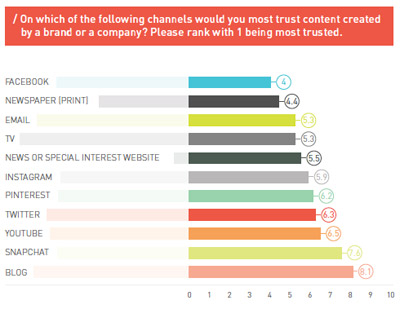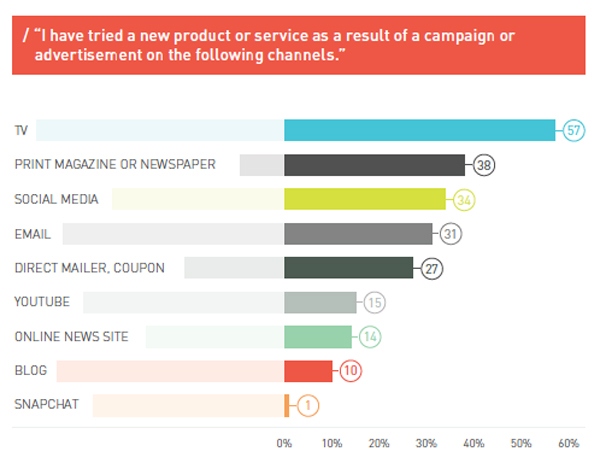 Call it the digital generation gap. Younger generations are more likely to trust social channels than their older counterparts, according to a new survey conducted by Acquity Group, part of Accenture Interactive.
Call it the digital generation gap. Younger generations are more likely to trust social channels than their older counterparts, according to a new survey conducted by Acquity Group, part of Accenture Interactive.
“The Next Generation of Commerce” found that 29 percent of college-aged consumers (ages 18-22) and 32 percent of Millennials (ages 23-30) rank Facebook as the most trusted source of branded content while only 16 percent of Baby Boomers (ages 52-68) do the same. Older consumers are more likely to trust traditional media, such as print (27 percent) or online news (20 percent).
Overall, older audiences are more likely to have tried a new product as a result of a brand’s sponsored ads or native advertising via traditional forms of media (like TV or newspapers), while younger generations are much more likely to have tried a product after seeing brand content on social or new media.
The study, which took the pulse of 2,000 consumers, examines how consumers interact with various media channels and consumer preferences for so-called branded content
As a growing number of companies adopt the “brand as publisher” model, PR managers and communicators need to know which media channels most resonate with their audiences and which are the most trusted among consumers so, as they develop original content, they can think strategically about the distribution.
Overall, 23 percent of consumers say they are influenced by content in news outlets, such as print and online media, when it is written by a brand. Brands looking to target audiences across platforms will need to pay attention to where content is most trusted in order to reach their audience most effectively.
When it comes to media coverage these days Facebook, Twitter et al. suck up a lot of the oxygen. Nevertheless, traditional media channels continue to hold sway with people.
 “While social media is gaining ground, TV and print media advertising still own the market as key influencers that drive new customers,” the survey said.
“While social media is gaining ground, TV and print media advertising still own the market as key influencers that drive new customers,” the survey said.
Indeed, among consumers who have tried a new product or service as result of a campaign or advertisement on various media channels, TV ranked the highest (57 percent), followed by print magazines or newspapers (38 percent) and social media (34 percent).
Both blogs (10 percent) and Snapchat (1 percent) were low on the totem pole.
Equally important to developing a content marketing strategy, brand managers also need to be cognizant about where their content is most likely to be shared.
On that account, don’t underestimate the pull of family and friends online, particularly with regard to the younger crowds.
According to the survey, Sixty-three percent of college-aged consumers (ages 18-22) and 67 percent of Millennials (ages 23-30) would view a video shared on a family member’s or friend’s wall, whereas only 23 percent and 21 percent of those respective age groups would view a post by a favorite brand.


 Real Chemistry has hired Wunderman Thompson’s Andy Johnson as chief information officer.
Real Chemistry has hired Wunderman Thompson’s Andy Johnson as chief information officer. The communications industry is often so caught up in the role of measurement that it loses sight of arguably the most important component in the measurement mix—the client’s bottom line.
The communications industry is often so caught up in the role of measurement that it loses sight of arguably the most important component in the measurement mix—the client’s bottom line. Imre has recruited Atul Sharma, who was VP-analytics at Porter Novelli, for the senior VP-intelligence slot.
Imre has recruited Atul Sharma, who was VP-analytics at Porter Novelli, for the senior VP-intelligence slot. Some of the ways in which analytics and artificial intelligence are transforming today’s communications landscape.
Some of the ways in which analytics and artificial intelligence are transforming today’s communications landscape. Edelman has launched a disinformation offering to help clients combat deceptive and false material with fact-based communications.
Edelman has launched a disinformation offering to help clients combat deceptive and false material with fact-based communications.


 Have a comment? Send it to
Have a comment? Send it to 
No comments have been submitted for this story yet.